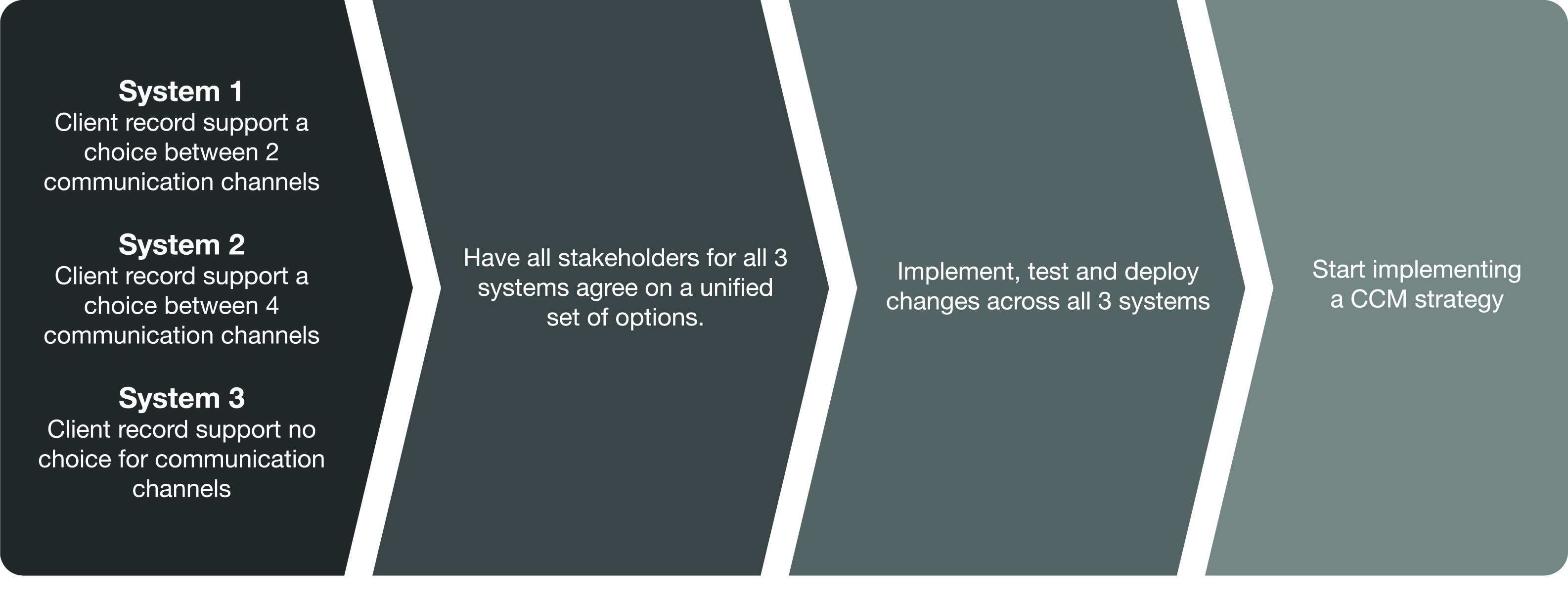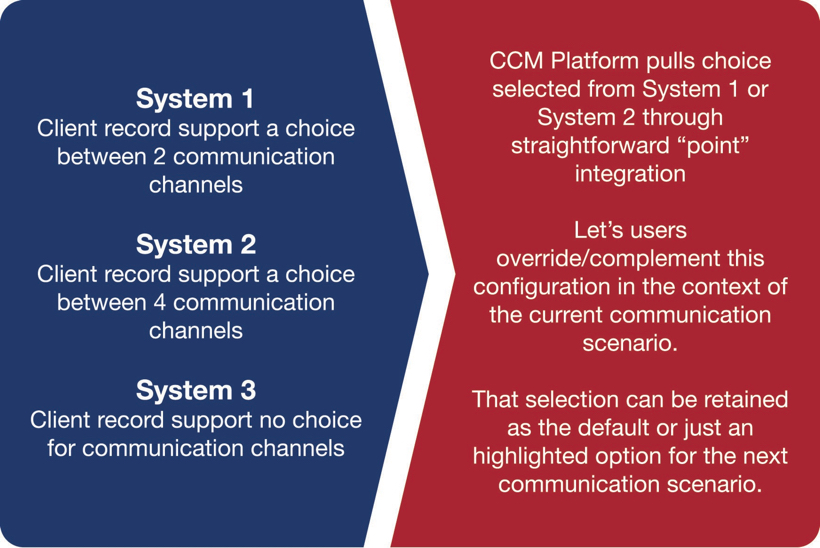
Image by: Wavebreakmedia Ltd, ©2016 Getty Images
There are many components to developing a modern, data-driven customer communications strategy, none of which are more challenging than securing full customer data and preferences. The difficulty lies in making them actionable in order to provide a seamless experience for the customer and allow for truly omni-channel capabilities. This task is at the core of every preferred customer strategy across business verticals and its level of accuracy bleeds into all other components of a modern customer communications management (CCM) solution. To be able to accomplish this, businesses have to sift through fragmented systems that aren’t built to work together, different processes, lines of business and channels. However, fragmentation isn’t the appropriate issue to address right now, because it’s unlikely to ever go away, and instead, companies should re-think their approaches to address the situation in a CCM context.
The traditional and most common method of tackling this type of project has been to start by establishing a single view of the customer. However, this requires a nearly insurmountable task of:
- (1) Assigning ownership of a master customer record
- (2) Reconciling the various, and sometimes conflicting, needs and regulatory requirements of distinct functional areas
- (3) Undergoing massive engineering rework of systems that could have been in place for decades.
Begin with a specific communication scenario
Companies should focus on a specific communication scenario and build from it, as opposed to dealing with an overbearing, centralized customer record across the board. Not only does this approach create a narrow, digestible vision of the project but also allows for businesses to set clearly defined goals and lay out a plan of action that is within the realm of their budget. It also makes it much easier to get the C-suite on board, who must approve budgets for all IT projects. As an example, an insurance carrier could start with a single process, such as claims, and pull the relevant core systems data “just in time.” This term refers to a process of sending customer data on a “need to know” basis by automatically pulling the most updated customer file on any legacy system when the customer needs it. If a customer were to print out a document, for example, an automated notification would alert the legacy system to send the most updated information for that person. This removes the tedious and nearly insurmountable task of combining all customer data into one master record.
Now, some core systems for some lines of business could already have a communication channel preference associated with each account, which then becomes the default setting for a specific claim transaction, while other systems/lines might not provide that. Either way, the customer communication platform will allow an override from a client or system-specified default, without creating any requirements to make changes to complex legacy systems.

A centralized customer record approach: The popular, yet less productive, method.
Each CCM project should be viewed as an event within the scenario
Once you select a scenario to focus on, the next step is organizing each distribution project as its own separate event. Within each event, you must map out what needs to be sent out, who the target customers are and in what possible format/channel each would prefer. Once this is determined, the next task is to create a CCM configuration, including existing customer data and process model that supports this initiative. Devise a point integration strategy, for example, fetching the required data elements, such as the recipients' email addresses, at regular intervals and/or just-in-time. Once all of this is set in motion, it’s important to ensure your CCM platform supports temporary overrides, with proper logging and audit trail—whether for circumventing time delays in core system data updates or allowing communications to be sent to an alternate destination, such as a beach house vacation home during the summer. If this is not performed, it’s possible that valuable customer data will not be captured by the core system and the customer also won’t receive the communication. The ability to let the customer control the new information they share is pivotal to building an accurate customer record.

Point integration approach: Limit impact and dependencies.
The key to adapting customer data into a powerful, data-driven and automated customer communications strategy is to tackle each component of your business one step at a time. Often with new initiatives like this, the IT goals and business goals aren’t aligned. By taking a segmented approach, IT departments are better able to quantify, measure and manage expectations on IT implementation goals. Once initial results are seen and confidence is built in putting this customer data to use in the right way, it can be applied to other sections of your business where they can continue to add in existing customer information.
Francis Dion is the chief executive officer of Xpertdoc Technologies Inc. With his entrepreneurial drive and passion for client services, he has over 20 years of experience in software development, managing information technology (IT) services, as well as consulting and training services. For more information, visit www.xpertdoc.com.










